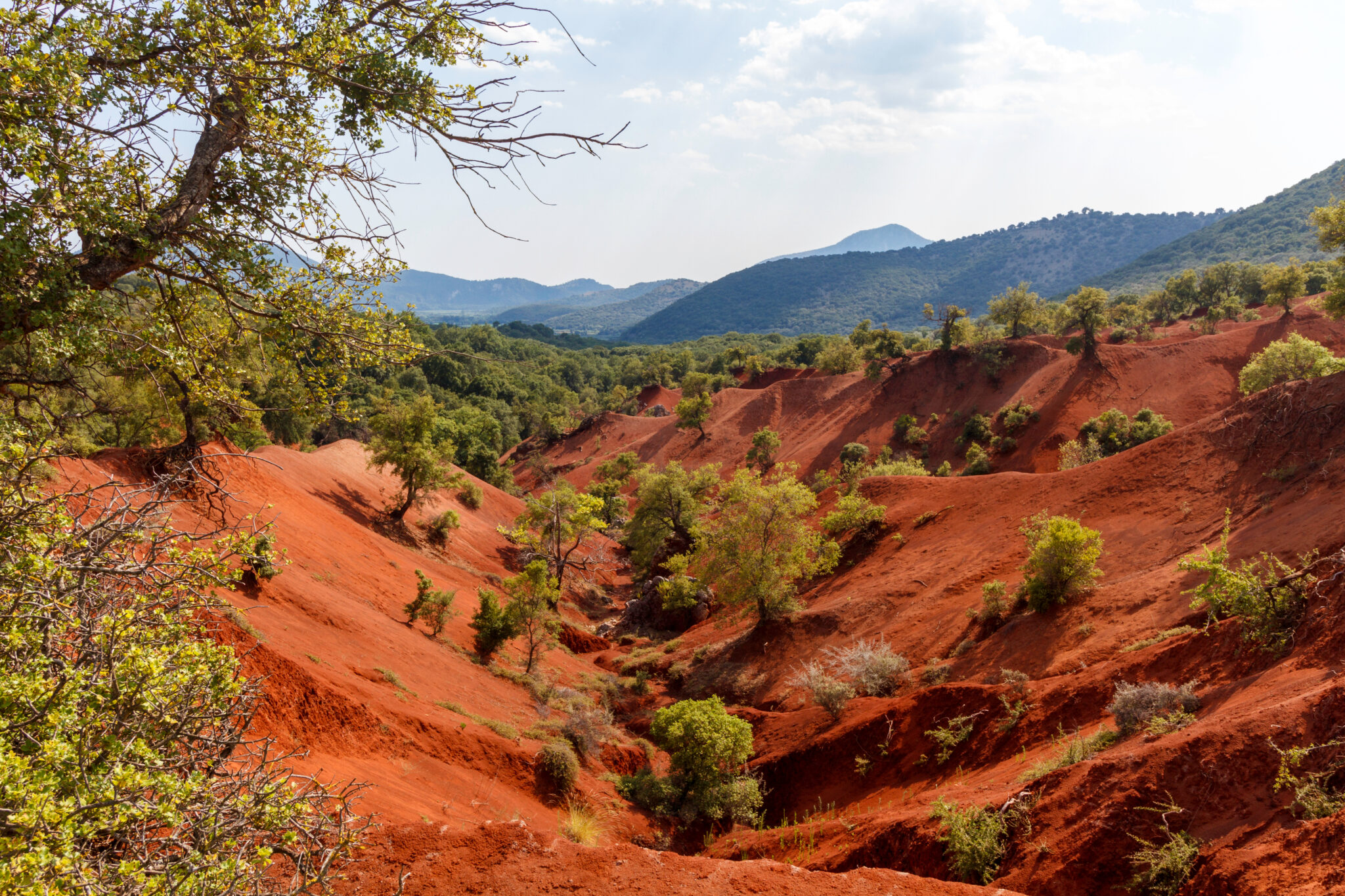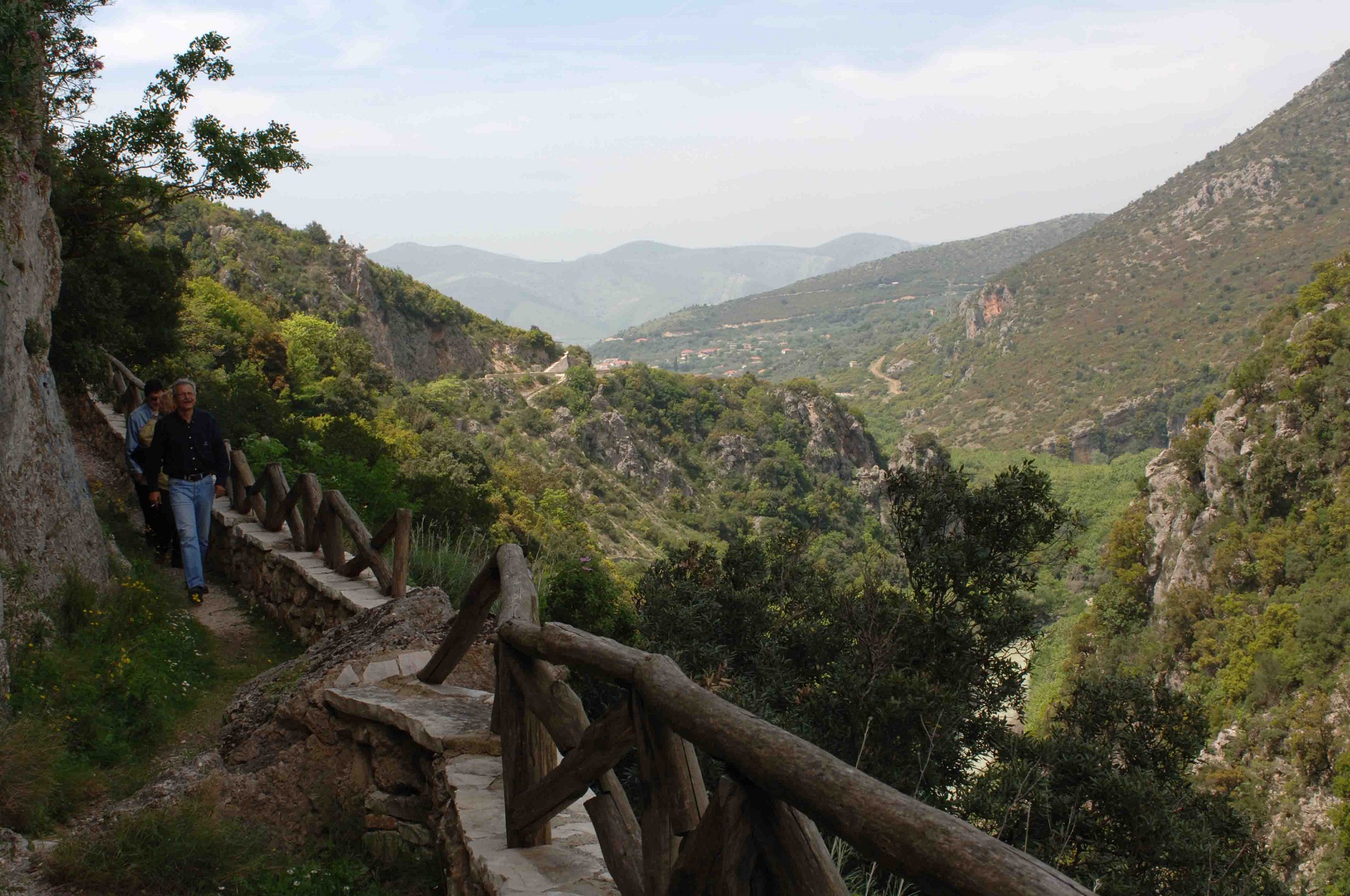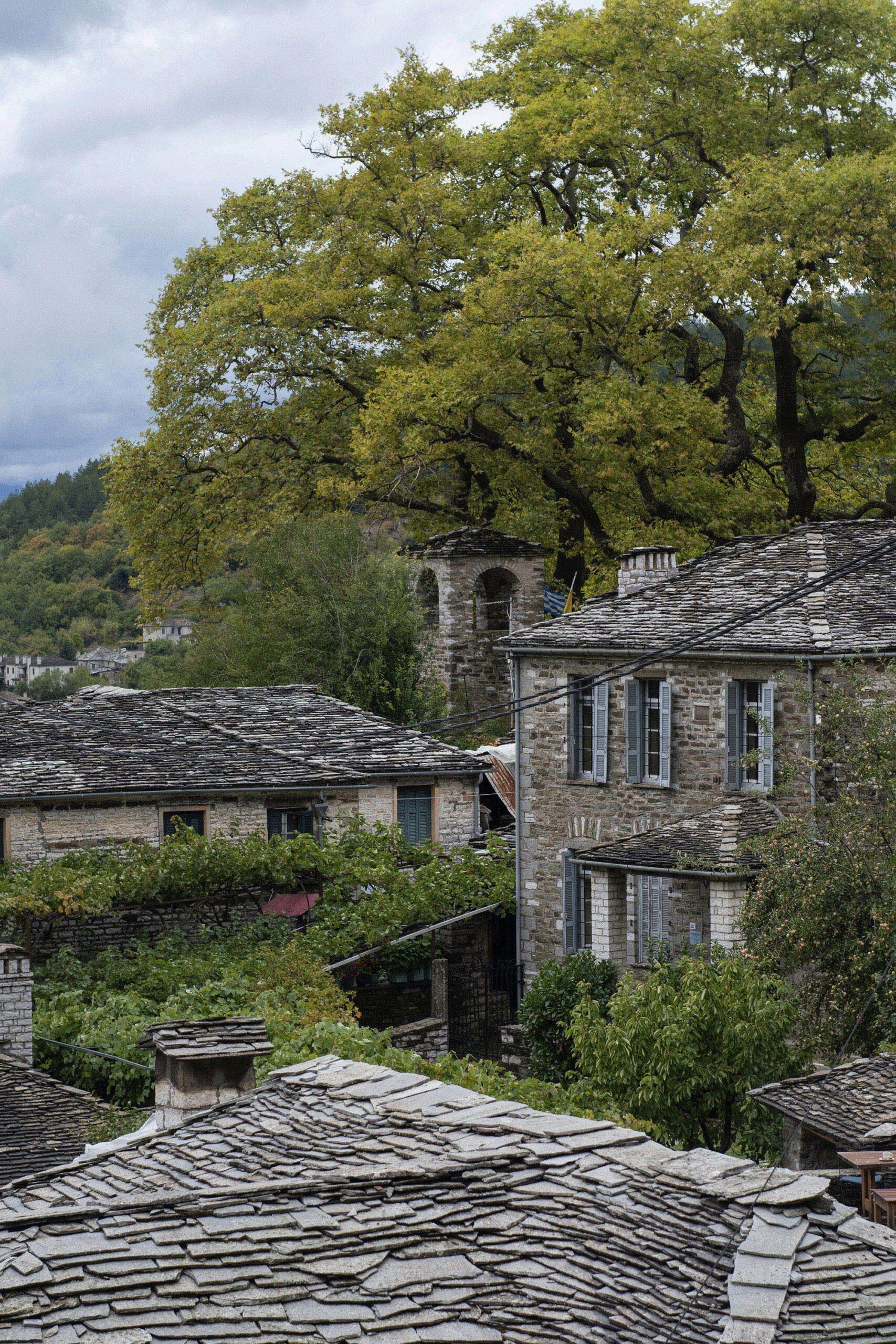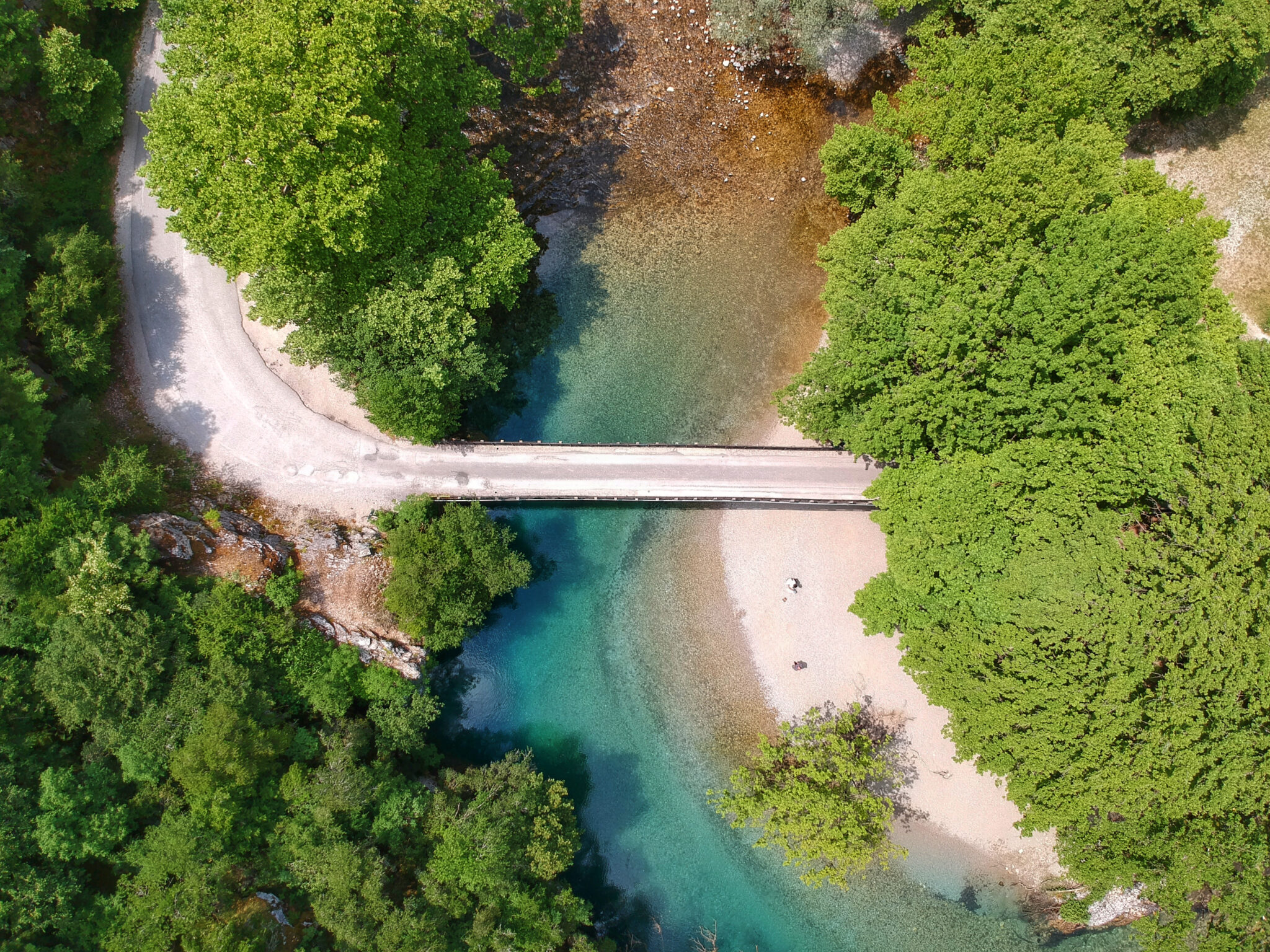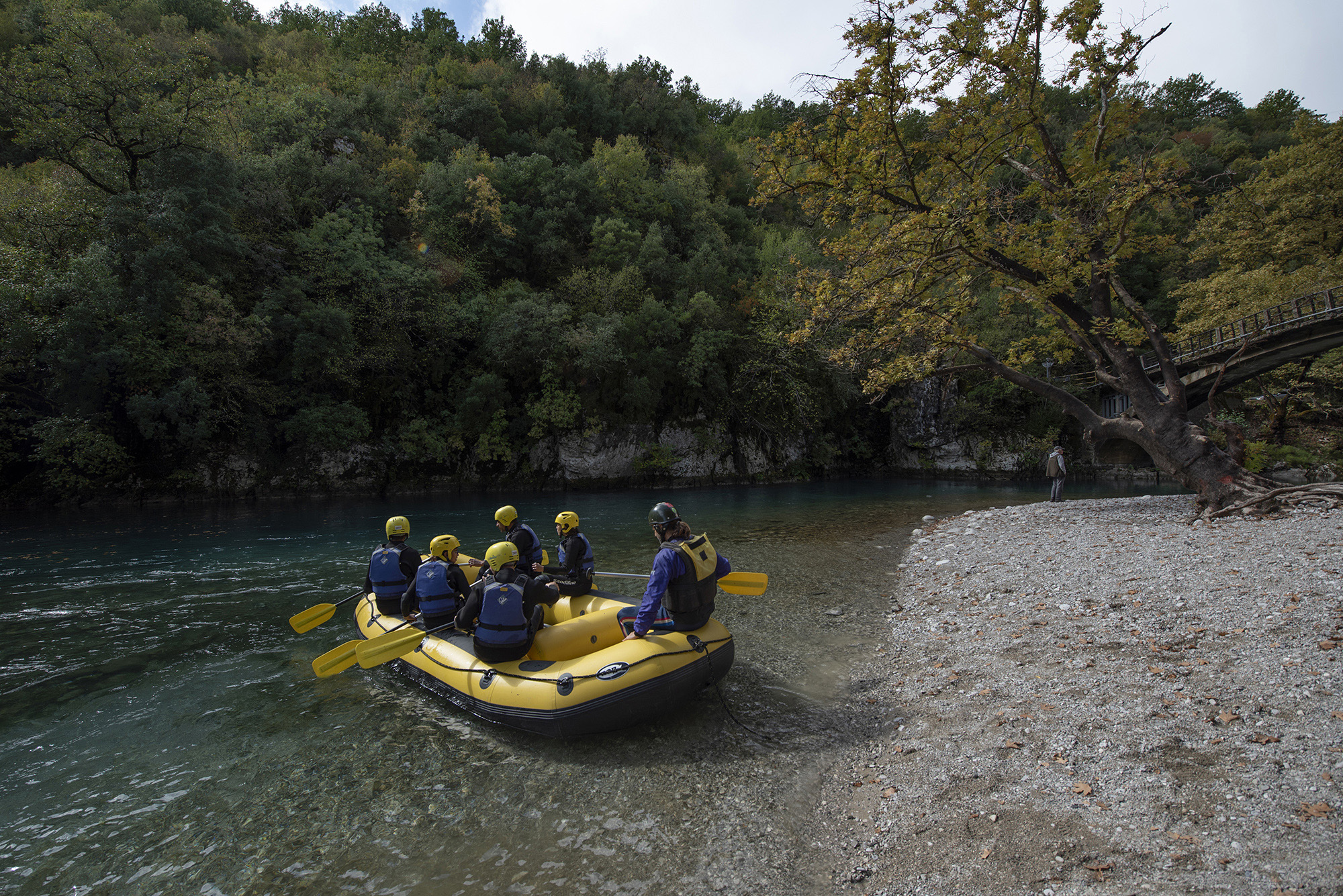Υou’re not on Mars. You’re on the crimson hills of Kokkinopilos. In Preveza, just outside Filippiada, very close to lake Ziros. A product of time and geological processes, a spot of crimson hills pops out of the surrounding green. Apart from their unique beauty the hills are also of scientific and archaeological value.
It’s hard to believe that such a place is only 100 m. off the National Road.
The hills are between 100 and 150 m. tall, and among them winding canyons have been formed by the rain, the wind and the changes in temperature. This landscape makes the place an ideal destination for nature lovers and hikers, but also the perfect setting for film and photo shoots. The sun affects the landscape in a special way. The hills cover an area of 600.000 m² and their small slopes take every shade of red depending on the time and the light.
It’s a karst sinkhole, a very old phenomenon; it’s estimated that the formation dates back to the Prehistoric Period. Its vivid colour is due to the red clay and the iron oxides, while the unique formations are due to corrosion phenomena.
Kokkinopilos has, with good reason, been described as a natural monument, and a geotope of great geological value by the Institute of Geology and Mineral Exploration (IGME), after geological studies carried out in the area by IGME and other independent researchers. The British archaeologist Eric Higgs discovered the area in 1962. At the excavation, that took place at the Asprochaliko location, there was a Greek professor among the British archaeologists, Sotirios Dakaris. There were more excavations in the area, carried out by Americans in the 1990s.
Many of the findings date back to the Palaeolithic Period, but tools of the Bronze Era were also discovered. A typical example is a double-edged axe made of stone aged 250.000 years. This and other objects, that prove the existence of primitive people in Kokkinopilos are on display at the Archaeological Museum of Ioannina.
The Roman Aqueduct passes through there, a remarkable example of ancient technology. It’s a huge construction more than 50 km long that provided water to Nikopolis, that was built around 30 BC and was around for at least 50 years and had a population of around 150.000 according to the archaeologists’ estimations.
Today Kokkinopilos is also a travel destination. The ideal seasons to visit are spring and summer when the sun gives the hills a bright colour. Access isn’t very easy, but the trails are easy. You can get there from two places: either from the village Agios Georgios, walking about 500 m. to the West, or from Lake Ziros towards Rizovouni and Stefani. The second choice is more challenging, as the asphalt road turns into a forest road and then you need to walk for about one kilometre.



